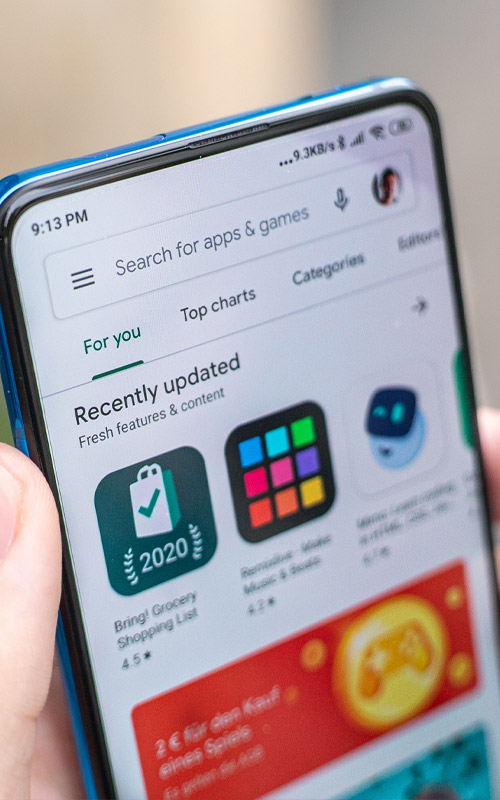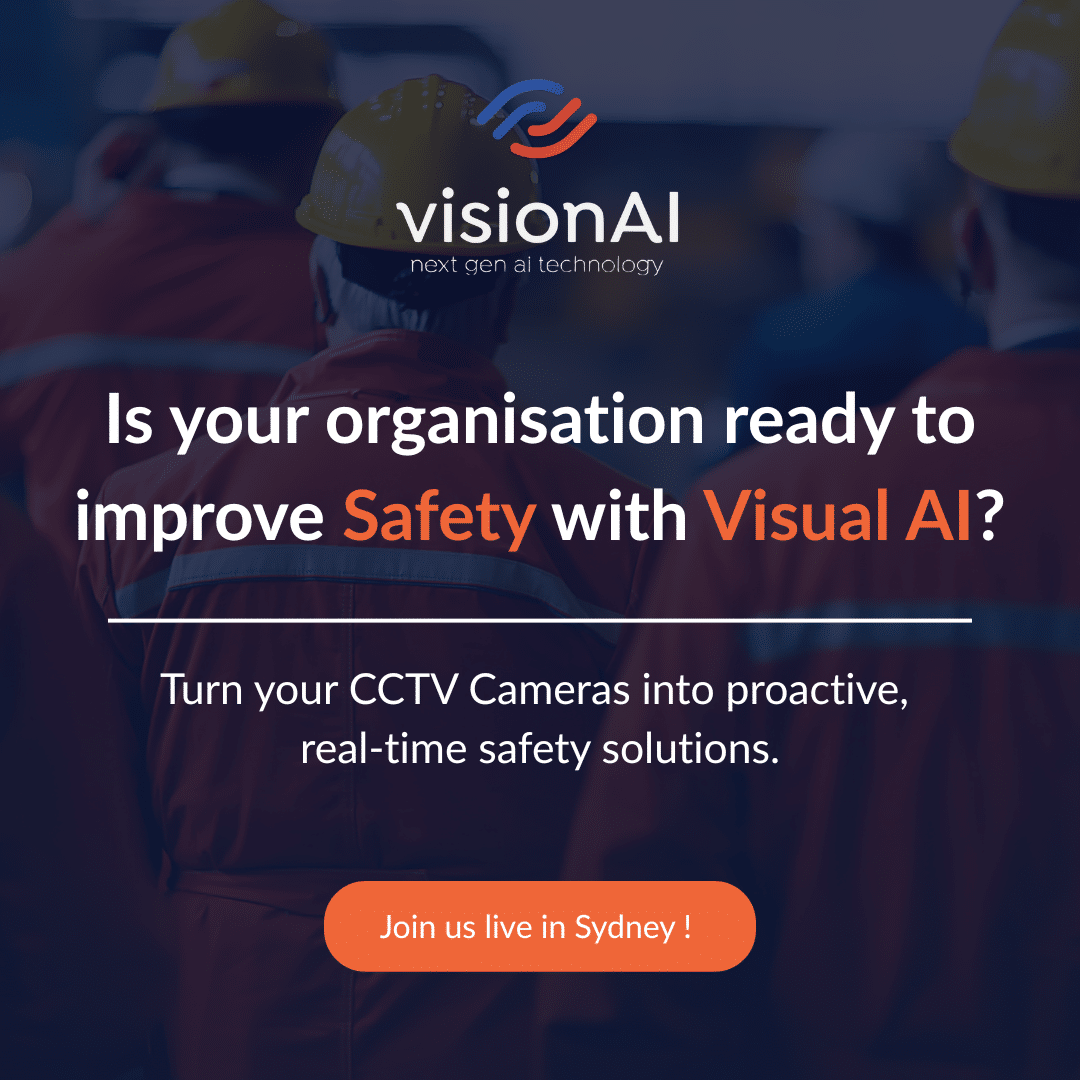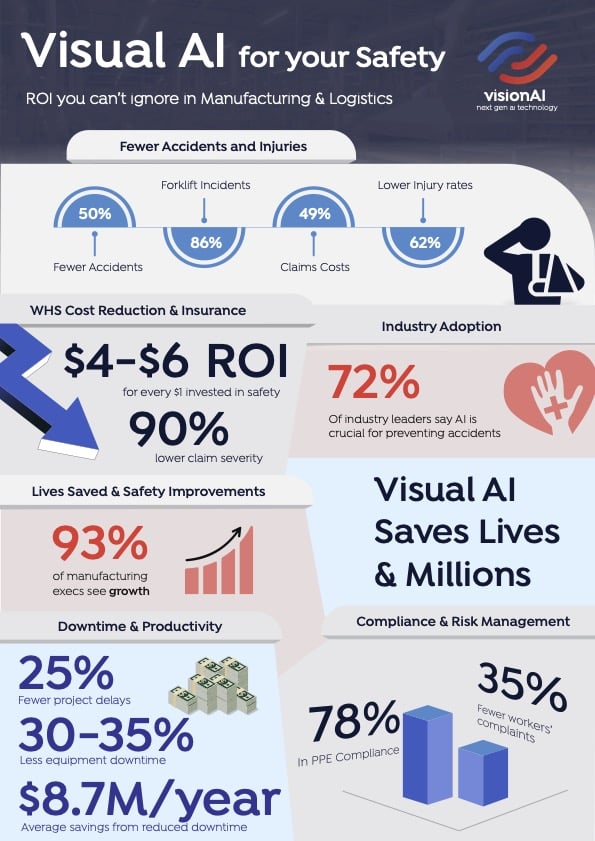The introduction of a new technology usually follows a similar pattern – at first, it is invented in labs deep underground in universities. At this point, it is unique, expensive, and difficult to use. Then some company takes a risk and commercialises it, giving them what’s known as; “the first-mover advantage”. From there, they frantically go through the research, the expense outlay and hard (read: expensive) work, to ultimately bring the technology to market.
Two great examples of first movers are;
- The first personal computer was invented in a Xerox research lab in Palo Alto. Alto was a computer designed from its inception to support an operating system based on a graphical user interface (GUI), later using the desktop metaphor. The first machines were introduced on 1 March 1973, a decade before mass-market GUI machines became available.
- A new form of photographic camera was first used by NASA on the moon landing. The Hasselblad 500C was modified including the removal of its leather covering, auxiliary shutter, reflex mirror, and viewfinder. A new film magazine was constructed to allow for 70 exposures instead of the usual 12. Finally, a matte black outer paint job minimised reflections in the window of the orbiter.
And so, if the innovation has a wide reach, then other companies pick up on the idea and start to commercialise it too. These are called the “fast followers”, and typically are the only companies to make money off the technology.
This is because they can sell it at the same price but did not have to go through the expense and effort of researching, testing, developing and producing the product that the first movers had done.
And there’s plenty of historical evidence to back this up. The first-mover advantage works when it’s an offering that’s innovative, disruptive, and manages to catch the competition by surprise.
An excellent example is Sony’s Betamax.
Let’s rewind to 1974 (pun intended). Betamax was a video cassette playback device for watching movies at home and until 1974, there was nothing even remotely close to it on the market. It was affordable and offered an extremely high-quality video picture. The Betamax was wildly successful and because of the complex technology of the era, for a while, no one else was able to compete.
Then Video Home System (VHS) devices entered the market and although the picture resolution was not as good, the recording length was much, much longer. It turns out that the folks back at VHS had figured out these two things through development;
- Sony’s Betamax had proven that there was a hunger for home entertainment and;
- consumers wanted to watch feature-length blockbuster movies.
Unfortunately for Sony, the Betamax was limited to only one-hour playback and it did not take long for Betamax to be relegated to the artefacts archives.
Once everyone is on board and using the next new shiny thing, it starts to become cheaper and cheaper to produce. As a result, perhaps with other related innovations, it becomes cheap enough to become ubiquitous, embedded in other products or just mass-produced and consumed. Face Recognition used to be very expensive and only done in labs and on TV shows like CSI, but when it became fast, cheap and good enough, it suddenly found its way into our everyday devices like smartphones and home cameras.
Something very interesting happens around this point. If enough people see a thing that is good and reasonably priced they start to get Ideas. Ideas about how to use a said thing in a new or novel way, or to improve on something else.
With enough combined mass effect, entire new industries are born.
With the mass adoption of the motorised vehicle over the horse-drawn cart in the United States, commercialisation of ski resorts became possible. No one wants to ride to a ski resort on the back of a horse -least of all, the horse. The same applied to ski lifts, previously one would have to schlep on foot uphill to enjoy the thrill of the run down again, this was indeed an arduous task.
Another fine example is fast internet, coinciding with good video compression algorithms, which has led to TV streaming platforms like Netflix. Looking back in the 80s it was inconceivable to imagine the development from TV to device with all your favourite movies and shows, on-demand. Yet, now it is the dominant way of watching TV (my daughter asked me the other day what a TV advert is).
The streaming AI algorithms are so advanced that they can accurately recommend which series or movies will get the attention of each user based on their interaction with the website. And in this way, user engagement is suggestively increased with the cancellation rate reduced, thus increasing the potential of having a user around for a more extended period. Netflix’s machine learning algorithm is one of the essential elements that make it one of the best streaming services out there.
And cartographers would have had their minds blown if we were to step back in time and tell them about GPS! The best map-producing company in the world would not have imagined that GPS technology + phone technology + cloud technology would result in Google Maps with paper-based maps and map books becoming obsolete in only about 20 years.

Just about everything we do today has an iota of technology in it.
From our smartphones and tablets to advanced computers, and sophisticated engineering and manufacturing equipment – technology is all around us. Over two decades ago, the cost of technology was high, but today it’s becoming more and more affordable as it develops at a rapid speed. Speaking of smartphones. Not so long ago cell phones had very limited functionality. They were used to make calls and play the odd game of snake. Blackberry was set to take the world by storm with their BBM instant messaging, but WhatsApp quickly took that space over and Blackberry was gone and forgotten.
Now we have every kind of app imaginable and hardly use our phones to actually make calls, not to mention the cost of mobile phones and data have become increasingly affordable.
How does Artificial Intelligence tie in?
Like any emerging technology, AI is the same. The first models that ushered in the era of AI that started to meet and/or surpass human performance, such as AlexNet in 2012, were very specific, expensive to train and run, and required a degree to operate.
Now, basic image recognition is built into your smartphone. Some phones can take a picture of a scene, and tag it with a description of exactly what is in that scene.
Automated translation from one language to another languished in an unusable state for decades. Now, at the flick of a button, your Teams meeting can translate, in real-time, what people are saying.
The wave is still coming.
But, these are just first-order uses of the technology. The First-Movers (Alexa) and Fast-Followers (Google Home) are still directly using this technology.
The real value comes from the second-order industries and use-cases that arise from a specific technology. For motor vehicles, think Ski Resorts, not faster cars.
We are still on the first part of this curve with Artificial Intelligence. For example, often when I speak to customers that run warehouses or factories, they have not yet even started to imagine how intelligent cameras, that can watch everything and take action, could help them. If your perception is that a camera that can pick up defects in a product costs millions of USD and takes months to implement, then you tend not to try to imagine the benefit that having 100 of these on your line would bring. And yet, if each camera is a few dollars, and can be customised and extended to suit your needs as time goes by, then the uses of them can be maximised.
So exactly, how fast is technology advancing?
Statistics that illustrate how fast technology is growing over the years have shown breakthrough technologies from all aspects of life and experts in the field predict that there is more to come.
Read on as I’ve compiled some of the most ground-breaking stats to help explain how far technology is progressing. In addition to this, I will shed more light on some of the upcoming trends, sure to leave you amazed!
The numbers are in.
The following are some fascinating stats handpicked from the most reliable sources:
Globally, there are about 1.35 million tech start-ups around the world.
The number of smart devices collecting, analysing, and sharing data should hit 50 billion by 2030.
The Internet adoption rate sits at 59% in 2021.
The computing and processing capacity of computers hits double figures every 18 months.
The world has produced 90% of its Big Data in the past two years.
Every second, 127 new devices are connected to the internet.
In Q1 of 2021, 4.66 billion people are using the internet.
And that’s just the tip of the iceberg.

General Technology Growth Stats
The following are some generalised statistics about how the growth of technology is influencing every sector.
The internet penetration rate in the world is at 59% as of January 2021.
(Source: Data Reportal)
There has been a growing telecommunications implementation over the last few decades. This has led to an ongoing internet usage rise. According to technology adoption statistics, the rate stands at almost 60% as of January 2021.
$183.18 billion – that is how much the web hosting services marketplace is expected to have generated by 2026.
(Source: Fortune Business Insight)
In 2017, the global web hosting market had a value of $32.12 billion, and in 2018 that figure rose to $60.90 billion. By Maintaining a Compound Annual Growth Rate (CAGR) of 15.1%, experts predict that the web hosting industry will be worth more than $100 billion in a few years as a result of global tech market growth. That’s why there’s such a fierce battle between the best hosting providers today.
There are 4.88 billion phone users in the world as of January 2021.
(Source: Bank My Cell)
62% of the world’s population owns a mobile phone, according to technology growth statistics. Compared to 2020, the number of phone owners has gone up by 0.1 billion. That includes both smart and feature phones.
Smartphone owners are in the majority, amounting to 3.8 billion and 1.08 billion are feature phone users.
By 2025, there will be 75 billion connected devices in the world.
(Source: Statista, MTA)
In 2025, the number of Internet of Things (IoT) will be three times that of 2019. Think air fryers, slow cookers, smart fridges and televisions and wearable technology like smartwatches.
The technology has become so popular that industry experts predict that every consumer will own roughly 15 IoT devices by 2030!
Google got 2.5 trillion searches in 2020.
(Source: Backlinko)
Without a doubt, Google continues to dominate the search engine space. When it comes to how fast technology is growing statistics, Google got more than two trillion searches in 2020 alone.
Let’s have a closer look at the numbers:
There were 81,000 searches every second in 2020. That translates to about seven billion enquiries per month.
The primary factor pioneering technological growth in the last few years is the need to reach new customers.
(Source: Finance Online)
Technology adoption statistics reveal that factors such as selling new business lines (38%), overall improvement of business operations (41%), improving sales and marketing (35%), and improving standard internal processes (33%), are the main drivers for tech growth.
By 2040, 95% of purchases will be online.
(Source: Nasdaq)
Shopping online is so convenient because you can get whatever you need from the comfort of your home regardless of time or location. According to technology growth stats, eCommerce will have grown so much that buyers will conduct almost all of their purchases online in the next two decades. But of course, the pandemic and lockdown accelerated this exponentially.
There are 3.96 billion social media users around the globe as of 2021.
(Source: Backlinko)
Social media has the power for us to connect regardless of our geographical location and at negligible costs if you have to buy data bundles. More places are introducing complimentary Wi-Fi, making it much easier to connect.
According to 2021 technology statistics, there are almost four billion social media users globally. Almost double since 2015.
AI and Machine Learning Statistics
Technology facts and figures indicate that AI remains one of the most sought-after technological advancements pioneering technological growth around the globe.
Read on to find out some amazing stats on how AI and machine learning are impacting society.
Google Translate algorithm has increased its efficiency from 55% to 85% following the implementation of machine learning into its translation services.
(Source: Finance Online)
Google Translate is a service developed by Google to help customers translate text and websites to any desired language. Before the introduction of AI, it would typically take more time to translate a series of words in a foreign language, as the process is done one text at a time. However, with the application of deep learning (a sub-function of AI), the Google Translate service is now able to interpret a whole sentence or website at once.
The global machine learning market is expected to reach $20.83 billion in 2024.
(Source: Finance Online, Forbes)
Tech growth stats show that machine learning is currently one of the most popular and most successful sub-functions of AI. It should come as no surprise that the market is growing in value. Worth around $1.58B in 2017, it is expected to reach $20.83B in 2024, growing at a CAGR of 44.06%.
The Compound Annual Growth Rate (CAGR) for AI will be 42.2% by 2027.
(Source: Grand View Research)
Statistics on how fast technology is advancing reveal that the artificial intelligence market was worth $10.1 billion in 2018. In 2019, that value increased to $39.9.
As you can see, there has been encouraging growth over the years, which is likely to continue.
Experts predict that there will be 95 million job openings because of artificial intelligence. By 2025, humans and machines will strike a balance of 50-50 when it comes to working.
And there are high chances that in most work environments in 2075, 9 out of 10 companies will use AGI technology.
71% of executives believe that artificial intelligence and machine learning are game-changers for businesses.
(Source: AMC Laboratories)
The world is beginning to wake up to the fact that robotics and automation powered by AI could be the future of work. However, some are more prepared than others. Those that fail to prepare may be left behind when the changes start to take effect.
AI is the most significant portion of the data strategy of any business, according to 61% of marketers.
(Source: Finance Online)
Data strategy is a set of informed decisions taken from a position of insight (after careful study of available data) on how best to move a business forward. It is the job of AI to study the set of available data, and help to draw insights as to existing flaws and what needs to be adapted to improve.
By 2030 the AI market will be worth over $15 trillion.
(Source: PWC)
AI technology is evolving, and the industry is growing quickly. Businesses and individuals alike love its efficiency. Logically, demand will continue to rise in the coming years. By 2030, its value will be $15+ trillion. More than ¾ of emerging technologies already planned to own foundations as early as 2021.
Big Data Statistics
Data that has become so large and complicated for the traditional computer system to make sense of is referred to as Big Data. However, Big Data impact statistics have shown that it can become a goldmine to whoever understands its capability.
Below we summarise the impact of Big Data on technology and internet growth.
Organizations that are data-driven are 23x more likely to acquire new leads than those without a data-driven strategy.
(Source: McKinsey)
Big Data can be a source of insight for those that care to put in the work, understand patterns in its data, and relate them to their various businesses. Facebook is an exemplary example of a company that is effectively utilising both AI and Big Data to better understand its audience.
91.6% of Fortune 1000 companies are investing more in Big Data and AI.
(Source: ZD Net)
Big Data is like the gold for businesses. Coupled with AI, a good deal of information can be extracted from both structured and unstructured data and the most successful entrepreneurs and the Fortune 1000 companies know this. For this reason, technology growth statistics tell us that these companies always have a specified budget put in place for data analytics.
Two-thirds of organizations that have utilised Big Data effectively have reportedly seen a decrease in operational expenses.
(Source: Datamation)
Big Data impact statistics reveal that for businesses that can do away with the surplus of useless data, Big Data can provide direct and specific information about what works for such businesses and what does not. That way, these businesses can avoid the trouble of wasting time, effort, and resources on strategies that don’t give results, enabling them to focus all of the energy and resources on what really works.
Mobile Technology Statistics
Internet traffic growth statistics tell that over the last decade, mobile usage has been on the rise, even surpassing desktop web traffic for the very first time in late 2015. Almost anything can now be achieved on mobile.
Check out some of these mobile tech statistics to discover how vital technological advancements on mobile have become.
Over half the traffic comes from mobile phones as of Q1 Of 2021.
(Source: Oberlo)
If you’re wondering how fast technology is growing – statistics for 2022 show phone traffic has increased by 49.47% since 2011. Back then, 93% of visitors came from the desktop, while mobile brought in a meagre 6%.
However, the two went head to head in 2016, when the difference was about 1%, i.e., 48.25% for mobile and 46.93% for computers. As of 2021, cell phone browsing had surpassed that of other internet-connected devices.
91% of internet users in 2020 were mobile phone owners.
(Source: Statista)
According to internet traffic growth statistics, more than half the world population was actively browsing the internet as of 2020. That translates to around four billion people. It is indeed a global village with billions of people who might have otherwise never met connecting.
We check our mobile phones about 150 times daily.
(Source: Business Services Week)
We are addicted to our phones and the technology that lies within them. The fact remains that mobile phones have become a massive part of how most of us function daily. We check our phones almost all the time for messages, notifications, news, time, etc.

Google Play and the Apple App Store have a combined 4.4 million mobile apps for download in 2020.
(Source: Statista)
90% of the mobile apps on Google Play and the Apple App Store are free to download. Notwithstanding, more businesses are beginning to understand the power of mobile apps and the number of time consumers spends on various apps daily. Technology adoption stats show that mobile apps can help develop a brand image and improve customer loyalty when done right.
About 56% of parents with kids aged between 8 and 12 years have purchased mobile phones for them.
(Source: NCL Net)
Statistics about how fast technology is growing to show that kids are growing up in a technologically advanced society. Back in the ’80s and ’90s, who would have ever thought that a 12-year-old would own a mobile phone, let alone an 8-year-old. However, that is the reality of today’s economy.
That’s why solutions like parental control software are becoming more and more popular.
98% of Generation Z have a mobile phone.
(Source: Global Web Index)
Technology advancement rate statistics go further to reveal that Generation X has a mobile penetration of 92%, Generation Z with 52%, and Baby Boomers with 42%.
There were 490 million new social media users in 2020.
Source: (Data Reportal)
Social media is getting more and more engaging by the day. The number of new users almost hit the five hundred million mark in 2020.
Increasing usage of mobile banking technologies could generate up to 95 million jobs.
(Source: Leftronics)
A McKinsey Global Institute study found that over 80% of adults in developing countries owned a mobile device. However, only 55% had a bank account.
Mass adoption of mobile banking technologies has the potential to empower people financially. For one, technology adoption stats show that it can generate up to 95 million jobs and even increase GDP by a whopping $3.7 trillion by 2025.
Internet of Things (IoT) Statistics
Over the last few years, the IoT has become a vital role player across many industries. More and more businesses are looking to integrate its many benefits into their network infrastructures and operations.
The following are some of the most up-to-date statistics around the growth of IoT.
127 new devices are connected to the internet, every second.
(Source: McKinsey)
With the availability of affordable computer chips (sensors) through nanotechnology and the ubiquity of wireless networks, almost anything can now be made a part of the IoT according to statistics about how fast technology is advancing.
There are 4.66 billion internet users as of the first quarter of 2021.
(Source: Data Reportal)
The first few months of 2021 show that 4.7 billion people are using the internet. That’s almost ¾ of people in the world, looking at it from a global perspective!
According to internet growth stats, Africa had the highest rate at 13,941%. The Middle East followed with 5,528% and finally Latin America with 2,545%.
Cellular IoT connections could reach 3.5 billion by 2023.
(Source: Forbes)
Cellular IoT connection is a feature that allows sensors to be able to transfer information directly to a computer or your mobile device within a region or specified distance. Health wearables that transfer the information about the state of health of a patient to a doctor or hospital are an excellent example of cellular IoT.
44 billion IoT devices could be in existence by 2025.
(Source: Statista)
IoT statistics reveal that there were over 25 billion IoT devices around the globe at the end of 2019. Statista predicts that there could be well over 50 billion by 2023.
40% of all automobiles will be connected to the internet through the Internet of Things by 2023.
(Source: Statista)
Technology statistics and findings show that the automobile industry is one of the few places where innovations in the IoT have seen significant improvements in the past few years. Aside from developing self-driving cars, research is being made to add lots of other features to the automobile industry through the Internet of Things. Soon, we could have vehicles that detect bad driving, accidents, and possibly imminent collision. In addition, cars that detect flaws in design while sending a report back to the manufacturer could also be a norm in years to come.
The IoT could generate up to $11 trillion in economic value per year by 2025.
(Source: McKinsey)
Statistics that illustrate how fast technology is growing show that the global usefulness and availability of the Internet of Things are increasing at a breakneck pace. The IoT can save costs, increase productivity, create employment, and bring in billions and trillions in economic value in the process.
Around 44% of businesses use IoT to reduce costs.
(Source: Leftronics)
IoT statistics show that more companies are pursuing smarter systems due to the technological growth in that sector.
As of 2021, about 44% of businesses use IoT devices to reduce costs. 37% of them use it to enhance operational processes, and 30% use them to grow revenue.
Interestingly, major tech websites are beginning to follow these technology trends and have started implementing similar systems.
Future Trends in Technology Growth
When it comes to future technological trends that will rule the world shortly, a few inventions come to mind. They include Blockchain, cloud computing, AR/VR, robotics, and automation. The stats that follow will expose you to some of these future technology trends.
There will be 8.4 billion voice assistants by 2024.
(Source: Statista)
In 2020, there were about 4 million virtual assistants. That number will double by 2024 and will be close to 8.5 billion units. The world’s human population is 7 billion, so let’s hope it’s not the dawn of the Matrix.
By 2025, 500 million VR headsets would have been sold.
(Source: Forbes)
An increasing smartphone adoption rate, the automobile industry, military and law enforcement training, the gaming industry, and growing technology awareness are some of the significant factors influencing the increasing need for VR headsets.
94% of the internet workload will be processed on the cloud by the end of 2021.
(Source: Network World)
Since its introduction to the mainstream market, the cloud computing trend has shown massive year-over-year growth. Experts believe that it will soon cause traditional data centres to go obsolete. As of 2018, the cloud was already housing 45% of the internet workload, and that number will rise even further in a few years.
The Blockchain technology industry’s revenue is predicted to hit $20 billion by 2024.
(Source: GlobeNewswire)
Experts predict that as time goes on, blockchain will find usefulness across multiple industries due to its secure and sophisticated network. Currently, there are ongoing successful experiments to combine Blockchain and Big Data to ensure uniformity and accuracy of results, especially in the insurance sector, and many more will follow in the years to come.
How Is Technology Affecting Our Lives?
There is no doubt about how vital technology has become to how we live our lives each day. The technology process has made life both more comfortable and efficient for us all.
The following stats will expound more on how technology is influencing our lives in general:
Technology has made communication easier.
(Source: Thrive Global)
The younger generations won’t remember the days without mobile phones. Today, anyone can pick up the phone and place a phone call to loved ones, irrespective of their location in the world. Plus, the coming of the internet and social media has made staying connected even cheaper.
Learning is now more efficient and accessible through technology.
(Source: Thrive Global)
In the past, you had to scourge the library for books on specific subjects that you intend to study. Today, there are billions of videos, podcasts, audio, and text over the internet on almost anything you wish to study or brush up on, making education more accessible than ever before.
Technology has improved advertising.
(Source: Thrive Global)
Billboards are becoming outdated, and door-to-door advertising is said to have gone extinct. With the internet, businesses can now reach their targeted audience with ease and still obtain better conversion rates than the old system of advertising.
Technology helps in healthcare, manufacturing, construction, retail and everyday life. It certainly has come a long way and in a short space of time! There are billions of inventions yet to be revealed by the upcoming generations, and many more after them. So, if you’ve ever wondered how fast is technology growing, statistically speaking, the answer is; lightning-fast. And it’s here to stay with no signs of slowing down.
It’s very difficult to imagine a world without technology. The future is exciting and the possibilities are infinite!




